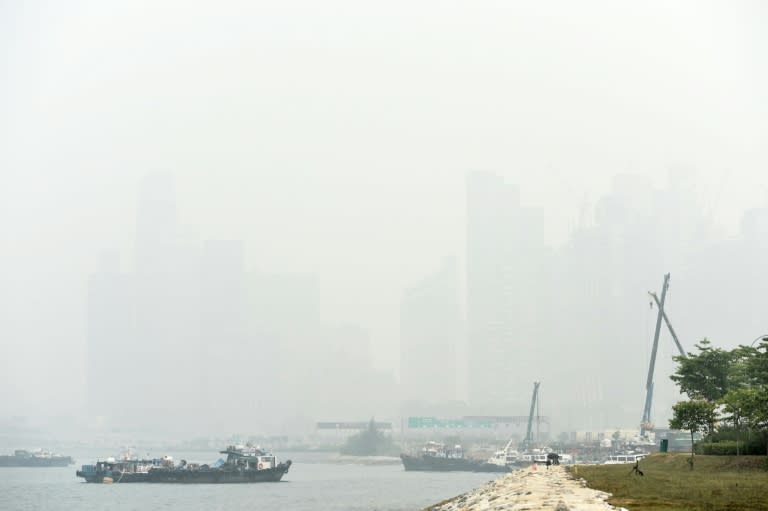Singapore avoids technical recession, eases monetary policy
Trade-dependent Singapore narrowly avoided a technical recession in the third quarter, official estimates showed Wednesday, but analysts said the city-state's growth outlook remains subdued because of China's slowdown. In a move to bolster growth, the Monetary Authority of Singapore (MAS) eased policy for a second time this year, slightly reducing the local dollar's rate of appreciation to make exports more competitive after other Asian countries weakened their own currencies. The central bank uses currency policy rather than interest rates as a tool to tweak the island's open economy. It manages the Singapore dollar against an undisclosed basket of currencies of its major trading partners and competitors. "The global disinflationary trend and depreciating currencies of our trading partners and competitors had somewhat eroded Singapore's export competitiveness," United Overseas Bank said in a market commentary. "Going ahead, the 'milder' appreciation of our currency against the basket of currencies could help to support our export growth." The Singapore dollar rose following the central bank move as traders focused on news that the economy averted a recession, but analysts expect it to ease in the coming months. Advance estimates from the trade ministry showed GDP grew 0.1 percent in the July-September quarter, defying expectations of a second consecutive quarterly contraction, which would have pushed the economy into a technical recession. An economic slump in China -- the world's second biggest economy -- is hurting demand for exports from Singapore and other Asian countries. "Despite the close shave, the storyline hasn't changed," leading bank DBS said, adding that the "growth outlook remains dicey". - 'Not out of the woods' - The MAS noted that "China's growth momentum is easing on a sharp deceleration in investment growth" which it said was among the factors weighing on trade-dependent economies. On an annual basis, GDP expanded 1.4 percent in the three months to September, slowing from 2.0 percent year-on-year growth in the June quarter. The GDP estimates released Wednesday were based on only two months of data -- July and August -- and adjustments could still be made when the final numbers are calculated with the September figures. "Singapore is not yet out of the woods," Rajiv Biswas, Asia-Pacific chief economist at IHS Global Insight, told AFP. The government expects GDP to expand 2.0-2.5 percent for the full year, but DBS, Southeast Asia's biggest lender, is forecasting 1.8 percent growth. "As China's GDP growth continues to slide, its Asia Pacific neighbours are starting to feel the pain," Biswas said. He said the region's vulnerability to the slowdown in China has risen over the past decade as China's GDP surged to $10.3 trillion in 2014 from only $2.3 trillion in 2005. Last year, China accounted for 15.3 percent of Singapore's non-oil domestic exports, much larger than the European Union's share of 11.1 percent and 9.5 percent for the United States, he said. China also bought 35 percent of Australia's exports, 25 percent of South Korea's and 20 percent of Japan's in 2014, he said. The World Bank is forecasting China's GDP to grow by 6.9 percent this year, moderating to 6.7 percent next year and 6.5 percent in 2017. GDP rose 7.3 percent in 2014.



